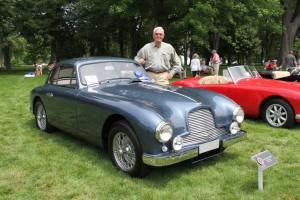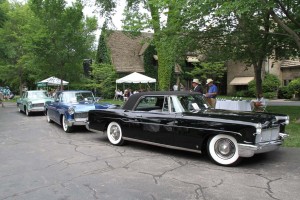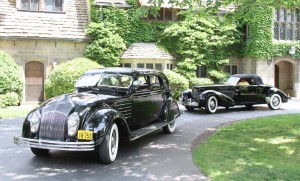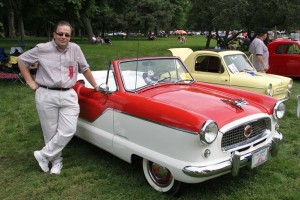There was something familiar about the car stuck in the back of a Swiss restoration shop, something Bob Lutz confirmed when he found the ancient owner’s manual and saw the neat notations made by his father nearly a half century earlier.
It took Lutz, the now-retired General Motors car czar just moments to decide to buy the old 1952 Aston Martin DB2 Vantage and ship it home to begin a long and laborious restoration process. But it eventually paid off, the one-time Marine pilot winning a Best-in-Class trophy, this past weekend, at the annual Eyes on Design show.
“The car was a mess,” recalls Lutz, having gone through several inappropriate modifications, “but it was my dad’s so I bought it.” Ironically, the long-time industry icon admits, he could have gotten it from his father in 1959, “But I was in the Marines, then, and had no place to keep it.”
There were plenty of treasures found and restored on display at the Eyes on Design event, held each year at the Eleanor and Edsel Ford mansion, in Grosse Pointe, Michigan.
That included a trio of 1956 Lincoln Continental Mark II coupes, identical but for the paint, built for Henry Ford II and his two siblings. Surprisingly, though they grew up in the sprawling mansion, it was the first time the three Marks had ever been driven onto the property at the same time.
It’s the season of auto shows, and collectors across the country are polishing paint and chrome to get ready to compete in celebrated classics like the Pebble Beach Concours d’Elegance. But organizers of the Eyes event shifted gears, some years back, deciding to put a focus on design rather than restoration.
That fits when one realizes the event was founded by Dr. Philip Hessburg, head of the Detroit Institute of Ophthalmology, one of the primary charities supported by the gathering. “I’m an eye guy, not a car guy,” he explains.
While there were a few VIPs on hand, like Lutz, the Eyes event tries to draw the more mainstream collector – even though there were plenty of million-dollar restorations on display. But getting it right, down to the nickel-plated nut, isn’t necessarily the way to win a crystal trophy at the June event, stressed Hessburg.
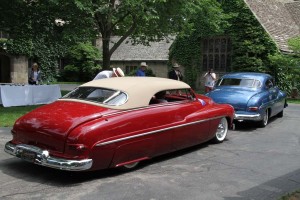
"Rock and stock," a pair of 1949 Mercurys, the one in the foreground customized like the James Dean classic from "Rebel Without a Cause."
“I don’t care if they have rust or dents, that’s not important,” he explained. “We care about cars as objects of beauty,” with the emphasis on design.
Indeed, there were plenty of critically influential models on display at this year’s gathering, including a 1934 Chrysler Airflow, arguably the world’s first aerodynamically-styled automobile, as well as a “coffin-nosed” Cord, the first U.S. automobile to feature pop-up headlamps.
The Airflow “was considered a commercial failure, noted Steve Pasteiner, a retired GM designer and commentator for the Eyes awards ceremony. “But it went on to influence car design for decades to come.”
A look across the field revealed a variety of vehicles that could be described similarly. Sometimes, suggested Pasteiner, when designers make giant leaps into the future, it’s not accepted – at least not immediately.
“The atmosphere here is really cool, with an emphasis on the art of the car,” said Chris Theodore, a long-time automotive engineer and collector, who brought his own Nash Metropolitan Convertible to the Eyes event.
Notably, Theodore drove it to the show, adding that “There are very few ‘trailer queens’” at the show, a disparaging reference to elitist collectors who will invest countless time and money but then display their prize automobiles as static art rather than mobile sculpture.

